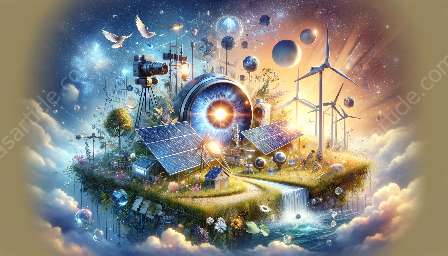Radiometry and photometry are fundamental concepts that play a crucial role in understanding and improving energy efficiency. This article aims to provide a comprehensive overview of radiometry and photometry and their relevance to energy efficiency, with a focus on their intersection with optics and optical engineering.
Understanding Radiometry and Photometry
Radiometry and photometry are branches of science that deal with the measurement and study of electromagnetic radiation, particularly in the visible, ultraviolet, and infrared regions of the electromagnetic spectrum. These disciplines are essential in evaluating and optimizing the performance of various energy-efficient lighting systems, solar panels, and optical devices.
Radiometry
Radiometry primarily focuses on the measurement and quantification of electromagnetic radiation across the entire spectrum, including both visible and non-visible regions. It encompasses parameters such as radiant flux, radiant intensity, irradiance, radiance, and radiant exitance. Radiometry provides a foundation for understanding the behavior of light and other forms of electromagnetic radiation, enabling the efficient design and implementation of energy-efficient systems.
Photometry
Photometry, on the other hand, specifically deals with the measurement of light as perceived by the human eye. It considers the sensitivity of the human eye to different wavelengths of light and provides metrics such as luminous flux, luminous intensity, illuminance, luminance, and luminous exitance. This branch of science is crucial for assessing the visual effectiveness and comfort of lighting systems, as well as their energy efficiency from a human-centric perspective.
Significance in Energy Efficiency
The principles of radiometry and photometry are integral to achieving energy efficiency in various applications, especially in the field of lighting and renewable energy. By understanding and applying these principles, it becomes possible to optimize the use of light and other forms of electromagnetic radiation, leading to reduced energy consumption and enhanced sustainability.
Role in Lighting Efficiency
Efficient lighting design relies heavily on radiometric and photometric analyses to ensure that the right amount of light is provided in the appropriate spectral range without unnecessary energy wastage. Through proper measurement and analysis of parameters such as illuminance and luminous flux, lighting systems can be tailored to meet specific requirements while minimizing energy usage.
Impact on Solar Energy Systems
For solar energy applications, radiometry is crucial in understanding the characteristics of solar radiation and optimizing the design and orientation of solar panels for maximum energy capture. Photometric considerations also come into play when evaluating the visual aspects of solar lighting and architectural integration, ensuring efficient use of natural light for energy savings.
Integration with Optics and Optical Engineering
Radiometry, photometry, optics, and optical engineering are interconnected disciplines that converge to address energy efficiency challenges through innovative solutions and technologies. The synergy between these fields enhances our ability to develop sustainable energy solutions with improved performance and reduced environmental impact.
Optical Properties and Radiometric Measurements
Optical engineering leverages radiometric measurements to analyze the transmission, reflection, and absorption of light in optical materials and devices. Understanding the radiometric properties of materials is vital for optimizing energy-efficient optical systems, such as lenses, mirrors, and coatings, by minimizing energy losses and maximizing light throughput.
Photometric Considerations in Optics
When designing optical systems for energy-related applications, photometric considerations play a key role in ensuring that the human perception of light is taken into account. This involves optimizing the visual comfort and efficiency of lighting systems, as well as integrating daylighting strategies that rely on natural light to reduce overall energy consumption.
Conclusion
Radiometry and photometry are indispensable tools for understanding and improving energy efficiency, especially in the realms of lighting and renewable energy. By integrating these principles with optics and optical engineering, we can create innovative solutions that drive the development of sustainable energy technologies. As we continue to address the global need for energy conservation and sustainability, the synergy between radiometry, photometry, optics, and optical engineering will be vital in shaping the future of energy efficiency.

